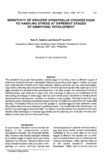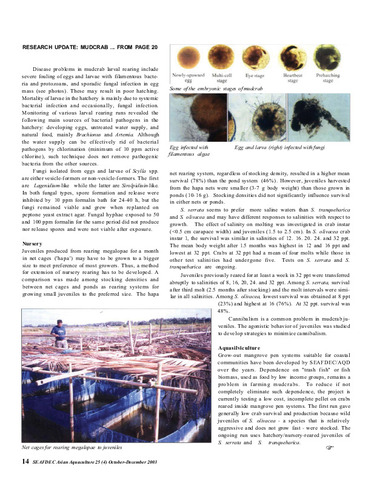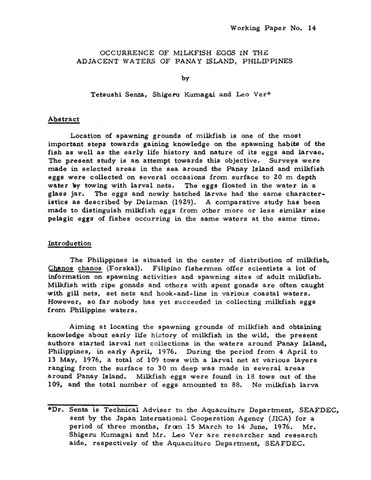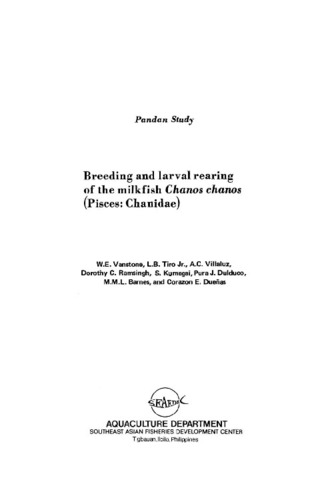Sensitivity of grouper Epinephelus coioides eggs to handling stress at different stages of embryonic development
Share
Abstract
The sensitivity of grouper Epinephelus coioides eggs to handling stress at different stages of embryonic development was investigated. Naturally-spawned grouper eggs in floating net cages were collected and handled at the early cleavage, blastula, gastrula, neurula, and eyed stages. Egg viability, hatching rate and percentage of normal larvae were significantly higher (p<0.05) in eggs collected and stocked at the eyed stage than in all other stages. An increasing sensitivity to handling stress was observed in eggs from early cleavage to gastrula, as manifested by the decreasing percentage of viable eggs, hatched, and normal larvae. Sensitivity to handling stress decreased when development reached the neurula and eyed stages. Hatched larvae from eggs handled during the blastula and gastrula stages had high mortalities during the first 3-24 hours after stocking. The results of this study show that grouper E. coioides eggs are most sensitive to handling stress during the early cleavage to gastrula phases. The results imply that harvesting or collection of grouper eggs is best done after neurulation, when the embryo has already formed optic vesicles (eyed stage), to increase egg viability and the hatching rate. It will also minimize mortalities and the occurence of abnormal larvae.
Suggested Citation
Caberoy, N. B., & Quinitio, G. F. (1998). Sensitivity of grouper Epinephelus coioides eggs to handling stress at different stages of embryonic development. The Israeli Journal of Aquaculture-Bamidgeh , 50(4), 167-173. http://hdl.handle.net/10862/1758
Subject
Collections
- AQD Journal Articles [1248]
Related items
Showing items related by title, author, creator and subject.
-
European Union's special project on mudcrab
Castaños, Milagros T.; Southeast Asian Fisheries Development Center, Aquaculture Department (Aquaculture Department, Southeast Asian Fisheries Development Center, 2003) -
Occurrence of milkfish eggs in the adjacent waters of Panay Island, Philippines
Senta, Tetsushi; Kumagai, Shigeru; Ver, Leo (Aquaculture Department, Southeast Asian Fisheries Development Center, 1976)Location of spawning grounds of milkfish is one of the most important steps towards gaining knowledge on the spawning habits of the fish as well as the early life history and nature of its eggs and larvae. The present study ... -
Breeding and larval rearing of the milkfish Chanos chanos (Pisces: Chanidae)
Vanstone, W.E.; Tiro, L.B. Jr.; Villaluz, Antonio C.; Ramsingh, D.C.; Kumagai, S.; Dulduco, P.J.; Barnes, M.M.L.; Dueñas, C.E. (Aquaculture Department, Southeast Asian Fisheries Development Center, 1977)Two sexually maturing female milkfish were captured in April 1977 and induced to spawn by means of acetone-dried Pacific salmon pituitary powder. The eggs were fertilized and incubated and the resultant young reared to ...




